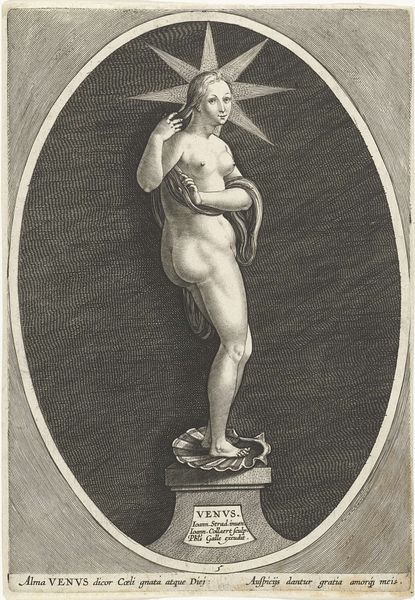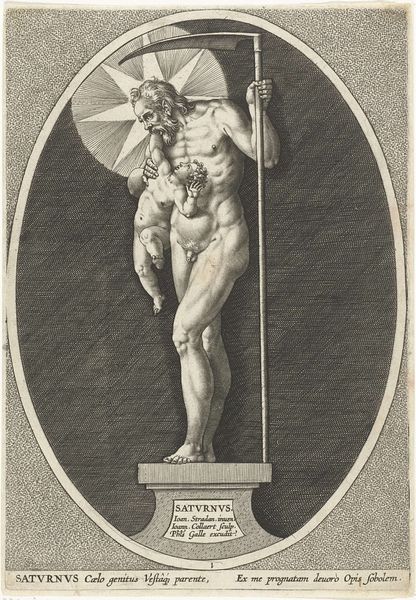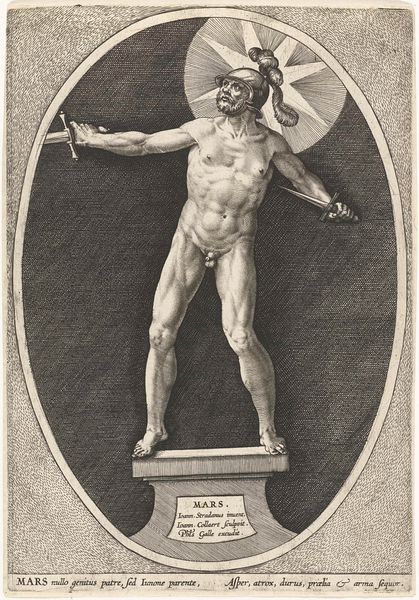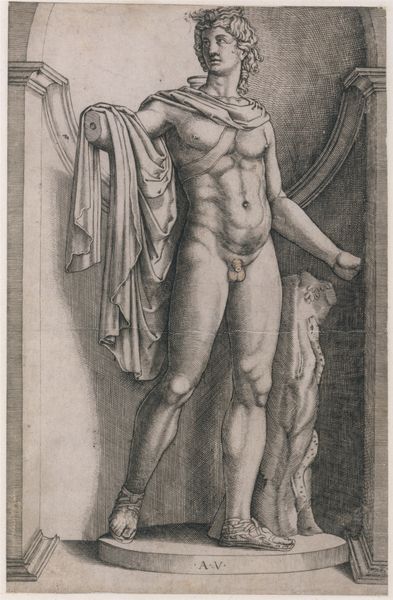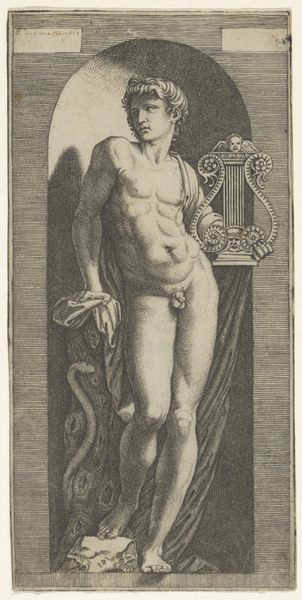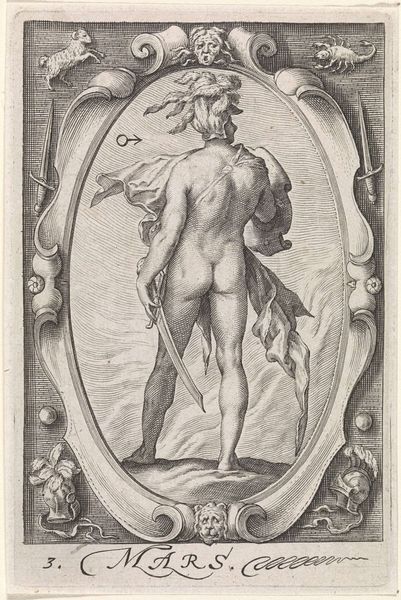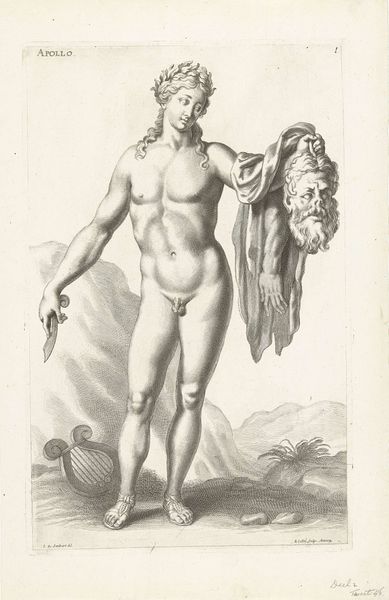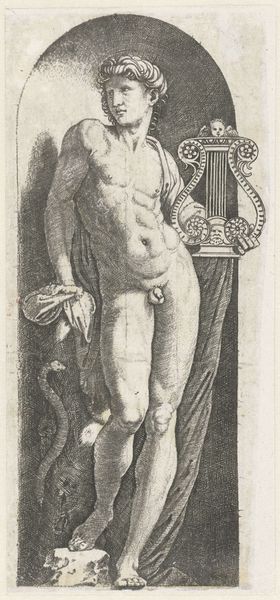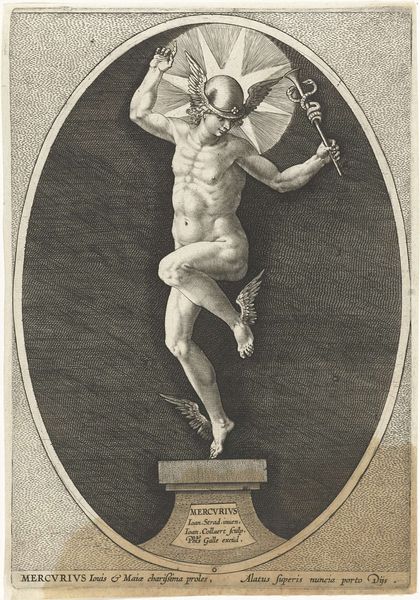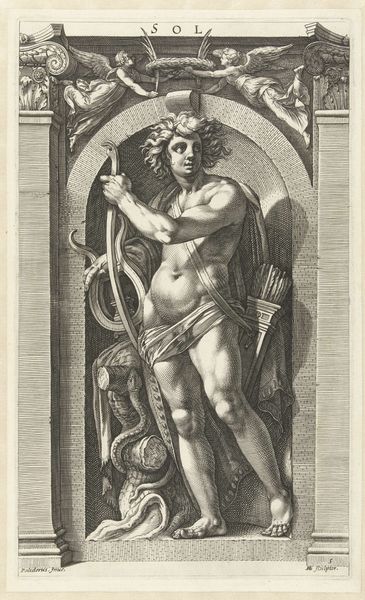
Dimensions: height 192 mm, width 136 mm
Copyright: Rijks Museum: Open Domain
This print of Luna, the Roman goddess of the moon, was created by Jan Collaert the Younger in Antwerp. The goddess stands in contrapposto, a classical pose that emphasizes the curves of her nude body. This idealization of the female form was fashionable at the time, reflecting broader humanist interests in classical antiquity and the revival of classical forms in the arts. Yet, the image of Luna in Collaert’s print represents a vision of the goddess filtered through a complex web of social and cultural codes. Prints like this circulated among a sophisticated audience of collectors and connoisseurs, and the publishing house of Philip Galle played a vital role in disseminating this visual culture across Europe. These images were not simply aesthetic objects; they were also commodities within a burgeoning market for art. Understanding the social life of such prints involves looking at who collected them, how they were displayed, and what kinds of knowledge were needed to interpret their rich iconography. It’s a reminder that art’s meaning is always shaped by its institutional context.
Comments
No comments
Be the first to comment and join the conversation on the ultimate creative platform.
